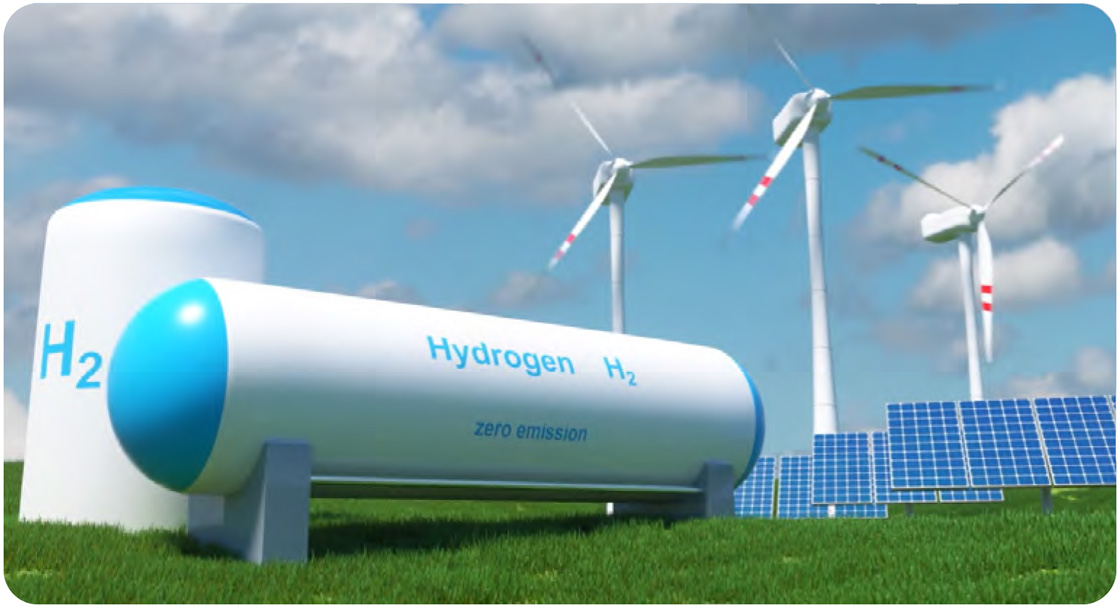 In the past few months, Europe's energy sector has absorbed several heavy shocks which have sent energy prices skyrocketing and sparked unprecedented concerns over energy security in the EU. In response, the European Commission has come forward with a new set of legislative proposals, the REPowerEU Plan, which will restructure the energy sector as we know it and reaffirms the EU's long-term objective of decarbonising the energy sector.
In the past few months, Europe's energy sector has absorbed several heavy shocks which have sent energy prices skyrocketing and sparked unprecedented concerns over energy security in the EU. In response, the European Commission has come forward with a new set of legislative proposals, the REPowerEU Plan, which will restructure the energy sector as we know it and reaffirms the EU's long-term objective of decarbonising the energy sector.
However, in order for the energy transition to be successful, an electricity-only approach will not be sufficient. It will have to go hand in hand with the integration of renewable and low-carbon gases, including hydrogen, into Europe's energy mix.
A new player in a changing market
While policy objectives such as the development of hydrogen are set by policymakers, energy regulators can provide their support as defined by their mandate. One of their key tasks is to allow new players to enter and compete in the market, while at the same time maximising system efficiency.
Differently from recent years, when market integration was pursued in relatively stable circumstances, regulators now face a sector undergoing profound changes. Guaranteeing stability for investors and security of supply for consumers becomes even more challenging in this context.
Here are three ways energy regulators can help support the deployment of hydrogen in our energy markets, with the aim of advancing toward decarbonisation targets and addressing emerging challenges.
1. Enable dynamic regulation and flexibility
The hydrogen sector is still in its early development phase and its regulation requires a sufficient level of flexibility and subsidiarity to allow innovation to take place. At the same time, the current heterogeneity of energy mixes across Europe has to be taken into proper consideration. This dynamic approach should also ensure a regulatory framework that enables markets and competition to work properly, ensuring efficient price signals and robust consumer protection – as stated in CEER's 2022-2025 Strategy.
In other words, energy regulators’ main task is to promote the technical, regulatory and market conditions that will enable hydrogen’s integration into the energy system. The specific regulation of the hydrogen sector will depend on the future location of production and consumption facilities, and on how the corresponding network infrastructure will develop. Regulators have the responsibility to identify and overcome any possible market barriers and to provide a clear framework to support the development and integration of such installations.
2. Ensure efficient system development and provide certainty for investors
In order to preserve the affordability of energy services for both industrial and household consumers, energy regulators must promote the emergence of competitive markets, and achieve efficiency in the energy system as a whole. Their role in overseeing the effectiveness, integrity and transparency of the market is key to building trust in the competitive process and fostering market participation. Non-discriminatory access to network infrastructure is also fundamental to promoting market integration.
To strike the right balance between enabling cost-effective development of the new hydrogen market and providing stability and certainty for investors, regulators should design efficient and stable cost-recovery principles for infrastructure. At the same time, these principles should not prevent the adoption of marketbased approaches and the possibility of competition among market players where possible.
3. Empower and protect gas consumers
The transition to a decarbonised energy system must safeguard reliable and affordable energy services to consumers. However, the concept of affordability extends beyond energy regulators' powers and must be addressed, among others, through social policies that do not distort energy markets, whilst promoting consumer awareness and protection.
There are a range of policies that can be influenced and monitored by energy regulators, such as the right to freely choose a supplier, and the pursuit of competitive, consumer-centred, flexible and non-discriminatory markets for gases. Along the same lines, the European Commission has proposed to mirror certain core consumer protection and empowerment rules from the electricity sector to the gas market (including hydrogen). The proposals take into account the expected use of hydrogen by different consumer groups, assuming that the hydrogen sector will initially concentrate on industrial and/ or transport use, rather than household use.
In summary, national energy regulators have an important role to play in enabling and facilitating the achievement of the energy transition. This role is underpinned by the protection of the consumer interest. They must also ensure a gradual and dynamic regulation of the hydrogen sector to enable this new energy vector to contribute to the EU’s decarbonisation goals, whilst reinforcing market principles and strengthening security of supply for all consumers.
The Council of European Energy Regulators (CEER) is a partner of the European Sustainable Energy Week (EUSEW)of which European Energy Innovation is a media partner. Registrations for this hybrid event are now open – on-site spots are limited.

Short biography/online profile:
Pedro Verdelho serves as Vice-President of the Council of European Energy Regulators (CEER) and chairs both the CEER and EU Agency for the Cooperation of Energy Regulators' (ACER) Gas Working Groups since 2019. Mr Verdelho also serves as the President of the Board at the Portuguese Energy Regulatory Authority (ERSE – Entidade Reguladora dos Serviços Energéticos). He holds a PhD, Master's and Undergraduate degrees in Electrical Engineering from the Instituto Superior Técnico in Lisbon.
Recommended links
1. ACER-CEER Position Paper on the Key Regulatory Requirements to Achieve Gas Decarbonisation
2. ACER-CEER White Paper on the Regulation of Hydrogen Networks
3. ACER-CEER White Paper on Regulatory Treatment of Power-to-Gas
4. The Bridge Beyond 2025